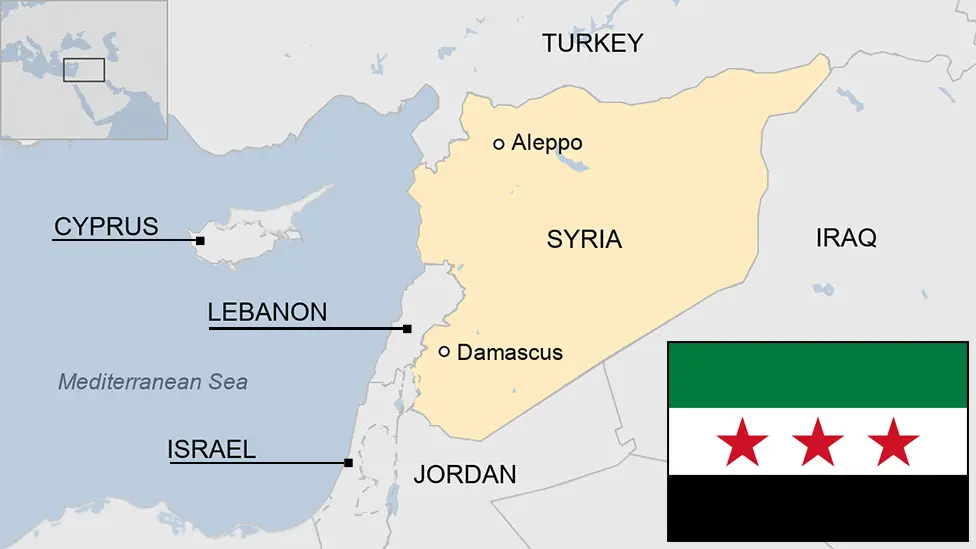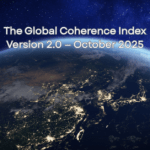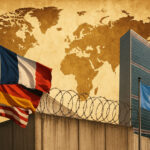Syria and the Regional Security Complex Theory: Understanding the Geopolitical Implications of Al-Sharaa’s Leadership
Syria’s transition to new leadership under Ahmad al-Sharaa, a former al-Qaeda member, marks a significant shift in Middle Eastern security dynamics. To fully grasp its impact, Buzan and Wæver’s Regional Security Complex Theory (RSCT) lets us understand how Syria fits into the broader regional security landscape. This theory explains how security is interconnected within geographic regions, shaping the way states and non-state actors interact in terms of threats, alliances, and power dynamics.
Syria in the Middle Eastern Regional Security Complex (RSC)
Under RSCT, the Middle East is considered a regional security complex (RSC)—a group of states whose security concerns are closely interlinked. Syria has historically played a crucial role in this complex due to:
- Its strategic location (bordering Lebanon, Israel, Iraq, Turkey, and Jordan)
- Its history of proxy conflicts involving the U.S., Russia, Iran, and Gulf states
- Its internal sectarian divisions, which have led to both civil war and foreign interventions
Now, with Al-Sharaa in power, Syria’s role in the regional security architecture is evolving.
Key Security Dynamics at Play
1. Power Shifts and Proxy Politics
Syria has long been a battleground for great power competition. Under Bashar al-Assad, it was aligned with Iran and Russia, while opposition groups were backed by the U.S., Turkey, and Gulf states. With a former militant now in charge, these alliances are in flux.
- Iran’s Influence: Tehran may see an opportunity to deepen ties or might be wary of Al-Sharaa’s past anti-Iran jihadist stance.
- Turkey’s Role: Ankara has supported opposition factions but will have to reassess its position now that HTS (Hayat Tahrir al-Sham) holds power.
- Russia & U.S.: Moscow backed Assad, while Washington supported Kurdish groups. Both will need to rethink their strategies.

2. Threat Perceptions Among Neighboring States
The rise of a former jihadist leader in Syria alarms neighboring Israel, Jordan, and Iraq, all of whom are concerned about:
- A resurgence of extremist networks in Syria
- Potential cross-border instability
- The breakdown of past agreements on security cooperation
This could lead to increased military action by Israel and heightened border security measures from Jordan and Iraq.
3. The Future of Insurgencies and Terrorism
While Al-Sharaa distanced himself from al-Qaeda years ago, his rise creates uncertainty about how Syria will handle jihadist groups like:
- ISIS remnants still operating in eastern Syria
- Pro-Iran militias that had previously fought against HTS
- Kurdish-led Syrian Democratic Forces (SDF), which may now face renewed pressure
The way Al-Sharaa navigates these relationships will determine whether Syria stabilizes or descends into another wave of conflict.
Syria’s Future in the Regional Security Complex
Using RSCT, we can identify three potential scenarios for Syria’s future role in regional security:
- Syria as a Destabilizer → If Al-Sharaa fails to establish legitimacy or control, Syria could become a failed statewhere extremist groups thrive, leading to further foreign intervention.
- Syria as a Balancer → If Al-Sharaa successfully consolidates power, he might play rival actors against each other, balancing Iran, Turkey, and Western interests to secure his rule.
- Syria as an Iranian Proxy → If Iran sees an opportunity, it may push Syria deeper into its anti-Western, anti-Israel axis, increasing regional tensions.
Conclusion: A Security Complex in Transition
Syria’s leadership change is not an isolated event—it affects the Middle Eastern regional security complex. Whether Al-Sharaa’s presidency leads to stability or further conflict depends on how regional actors respond.
- Will Turkey, Israel, and Iran escalate their involvement?
- Will the U.S. and Russia shift their Middle East strategies?
- Will Syria become a stabilizing force or another failed state?
Through the lens of RSCT, Syria’s security future remains deeply entangled in regional power struggles, making it a pivotal case in Middle Eastern geopolitics.
References
- Former al Qaeda member named as Syria’s president for transitional period. (2024, 30 enero). CNN. https://www.cnn.com/2025/01/29/middleeast/ahmad-al-sharaa-named-syria-transitional-president-intl-latam/index.html
- BBC News. (2025, 7 enero). Syria country profile. https://www.bbc.com/news/world-middle-east-14703856
- ChatGPT. (n.d.). OpenAI. https://chat.openai.com/#
- Buzan, B., Buzan, B. G., W’ver, O., Waever, O., & Buzan, R. P. O. I. S. C. F. T. S. O. D. B. (2003). Regions and powers: The Structure of International Security. Cambridge University Press.
- Ballin, E. H., Dijstelbloem, H., & De Goede, P. (2020). The extension of the concept of security. En Research for policy (pp. 13-39). https://doi.org/10.1007/978-3-030-37606-2_2









No responses yet